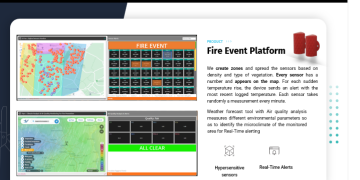Integrating zoological gardens and animals under human care into a science- and technology-driven research and conservation project
Modern Zoological gardens and aquariums worldwide provide unique opportunities by contributing expertise in animal care, species conservation, and public education, forming a strong foundation for modern conservation and scientific research. By working closely with these institutions and utilizing the data and insights they generate, the GAIA Initiative aims at bridging the gap between in-situ and ex-situ conservation efforts. Animals under human care can serve as valuable models for understanding species’ biology, behaviour, and responses to environmental changes. Furthermore, the controlled conditions of zoological gardens allow for the development and testing of advanced technologies, such as animal-borne sensors and AI systems, under more predictable and accessible settings before deployment in the wild.
Key focus areas of this building block include:
- Generating reference and training data for the development of the AI pipeline for the sensor data. By deploying the tags on vultures in captivity in a large aviary and recoding their behaviour simultaneously, we were able to create a paired dataset for the training of the AI. With the trained AI there is no more need to observe the animals to detect relevant behaviour, e.g. feeding; the AI can very reliably predict behaviour from the sensor data giving us insights in the behaviour of the target animals throughout their life.
- Education and public engagement: Zoo Berlin integrates GAIA’s findings into its educational programs and collaborates in media relations and public outreach, fostering public awareness and participation in biodiversity conservation and technological innovations. Visitors are introduced to cutting-edge tools and their impact on wildlife conservation.
Having minimal and only strictly necessary impact on individual animals is a key goal of the GAIA Initiative. For both lions and vultures, there were extensive testing procedures conducted (within the German system of Animal Testing and Animal Welfare) in Berlin Zoo and Berlin Tierpark. Techniques were developed and tested by veterinary experts for both zoo animals and wildlife and are considered safe and compatible with strict animal welfare considerations. Additionally, both within GAIA and by other research groups there is long-term experience and data on the effects of tagging and collaring of the respective species. It has been proven, for example, that tagging vultures does not have any detrimental effects on the birds’ well-being, health or reproduction. Vulture were found to live many years with tags, to have similar movement and foraging behavior, and to have offspring.
The partnership of GAIA with the Zoo Berlin also emphasises the communication and knowledge transfer objectives of the Initiative in the sense of the GBF target 21 "Ensure that Knowledge is Available and Accessible to Guide Biodiversity Action". This field of activitey not only targets the wider public for raising awareness for biodiversity conservation and technological innovations, but also aims at political decision makers on national and international levels. GAIA has been very active in consulting with political stakeholders in Germany and Namibia for example as well as participating in the IUCN Regional Conservation Forum 2024 in Bruges, Belgium.
